Although most of the train tunnels being built in London for Crossrail will be brand new, one section of tunnel will in fact be already over 140 years old when the first Crossrail train passes through. Built under the docks in the East End of London, the Connaught Tunnel has been abandoned ever since the North London Line was closed down in December 2006 after the DLR extension was completed, and it has lain empty ever since.
Soon though, builders will rudely wake it from its slumber with some quite substantial works and it will eventually return to life as a train tunnel once again.
A bit of history
The Royal Victoria Dock was opened in 1855 on a previously uninhabited area of the Plaistow Marshes to provide space for the larger cargo ships, and was a commercial success. So much so, that the company decided to build another dock next door to cope with demand, the Royal Albert Dock.
The problem was that they had only recently built a railway around the north and east of the first dock, and it would cut the two docks in half, so they decided to dig a cut-and-cover tunnel, and then build the dock above that. And so they did, in 1878.
A thin water channel linked the two docks running right over the tunnel, but as ships got larger they couldn’t fit through the narrow canal and it was deepened to 8 meters to cope. Unfortunately, they were a bit too aggressive, and it wasn’t long before the bottoms of the boats were scraping the top of the tunnel.
Not particularly good for the boats, and definitely not good for the tunnel underneath.
As a result in 1935, a 100 metre length of double-track wide tunnel was filled in and two smaller iron lined tunnels were left behind for the trains.
And so it remained, being used by the North London Line while the docks above slowly decayed before their resurrection in the 1980s.
It’s now time for the tunnels to get their own resurrection.
Before the works begin, was one last chance to see the tunnel in its current state – so by courtesy of Crossrail, a few people got taken down for a walk through the tunnels.
A few photos:
In the middle though, the huge tunnel suddenly shrinks into two smaller almost tube-like tunnels lined with iron rings. This is the section I mentioned above which runs directly underneath the watery path linking the two docks.
A fairly complex procedure is about to be carried out, which either excites or horrifies engineers depending on how they look at the difference between opportunities and problems.
In essence, the canal above is to be dredged to remove about a metre of silt and a 1-metre thick concrete slab poured on the bottom to act as a protective shield.
Then, the current plan – and it is still being discussed – is that the rusting iron rings will be removed and the tunnels filled with a low strength foam concrete to stop the tunnel from collapsing. Having created a solid concrete/brick plug along the dock insert, then the whole thing will be tunnelled out again to create the wider tunnels needed for Crossrail trains and their overhead electrics, and lined with modern utilitarian concrete rings.
The digging out of the new tunnel is expected to be done by hand/machine rather than by a dedicated TBM (tunnel boring machine) such as they are using on the rest of the network.
They are not entirely sure what those smaller tunnels are next to the main train tunnel. Whatever they end up being, the two closest to the trains will be filled in for stability, and that third one on the far right might be left for services, or something.
A final ventilation shaft at each end marks the start of the transformation from high vaults to small tunnel – and those ventilation shafts are visible above ground, as is the pumping house that used to keep the tunnels dry.
A brief diversion down one tunnel to look at the project manager’s favourite piece of the copious graffiti in the tunnels. The person who daubed it may love tunnels, but presumably not enough love as to avoid defacing them?
Back to the other tunnel which is safer to walk down – and back through to the other side and eventually out into the bright sunlit highlands of, erm, well, the rotting remains of the Silvertown train station.
The alignment of the tracks through Silvertown makes the existing station unsuitable for use by Crossrail trains. The station will therefore be demolished, though passive provision will be made nearby for a future Crossrail station in the event of the development of adjacent properties.
As we approached the footbridge that still carries people over the derelict line, we noticed people building a temporary path across the once and future train lines.
It seems some idiot drove their car into the footbridge at the weekend, so while that is being repaired, people will be offered a chance to cross the tracks without going up and down stairs. I bet many locals will wish it were a permanent change.
As the wayward motorist hit the bridge at the weekend, it is for Crossrail to pick up the repair bill, as they signed the paperwork taking control of the land just a day before the accident.
Oh well.
Although some early thoughts were to either just build a new tunnel, or just bulldoze their way through the Connaught Tunnel, the people handling the works are quite keen to save as much as possible. The brick/concrete arches that mark the entrances to the tunnels for example were to be demolished and replaced with modern variants, but now they will be preserved in situ.
Likewise, the brick tunnel will be sympathetically repaired – and while the works to the iron-lined central section will destroy it, there was never any realistic hope of preserving that intact. It is too badly corroded and too small for the trains anyway.
So we will have a restored entrance/exit, but a concrete middle. The good thing is that the cost of these works, while a significant £50 million, is still less than it would cost to have dug brand new tunnels.
In effect, we are getting the Victorian train tunnel being restored for free.
Which is not bad.
Newham council has also agreed to rebuild the old Victorian pumping station elsewhere as it is too small for the modern equipment that it will need to house. Crossrail will dismantle it, and build a suitable replacement, while Newham will get a big pile of bricks and an Ikea instruction manual to reassemble them later.
The reconstruction of tunnel including fitting out is expected to take a bit over four years.
Personally, I think it’ll be nice if they can have some sort of public walk though once the tunnel works are completed and before fitting out with tracks etc happen, so fingers crossed that in 4-5 years time people can walk down a restored Victorian train tunnel and admire the 140 year old brickwork and the somewhat younger restoration.
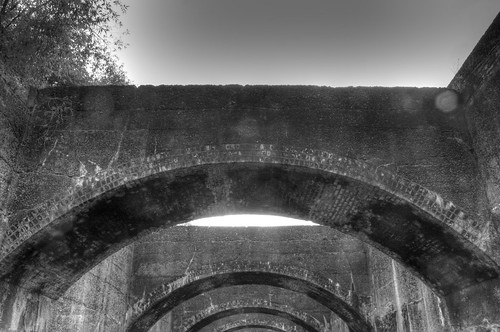
Thanks to the people at Crossrail for the invitation to see the tunnel in its current condition before the builders take over in a few days time.
The above photos, and about 30 more over in my photo gallery.
Some Crossrail related blog posts:
Photos of the Crossrail station at Canary Wharf
Crossrail lecture at The Building Centre
Elsewhere on the web:
BBC London went in a couple of weeks ago
London Reconnections went in last year
Train driver video from 1995 – reverse route to our walk.


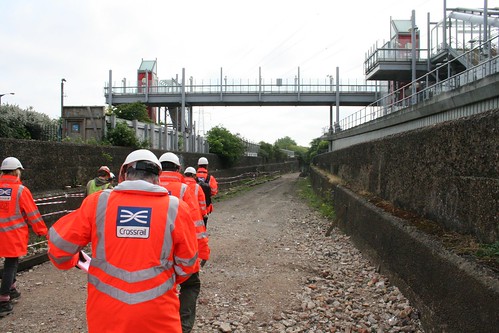

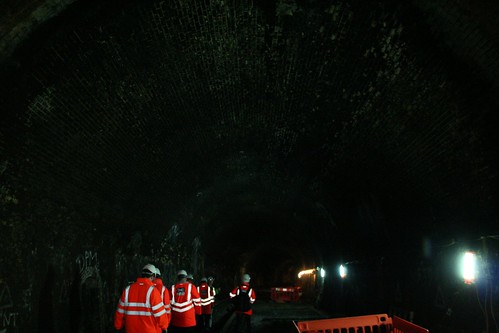
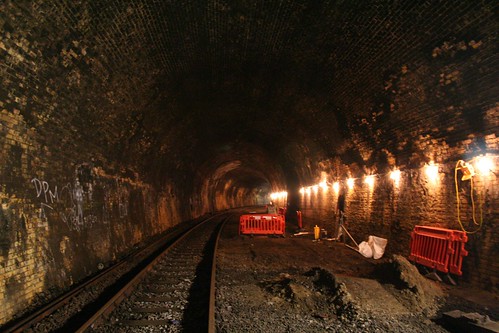
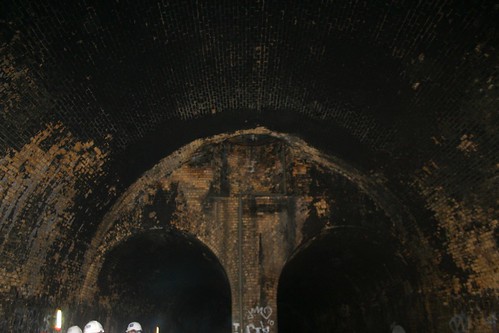
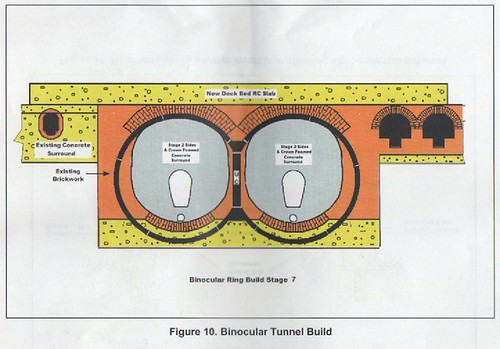
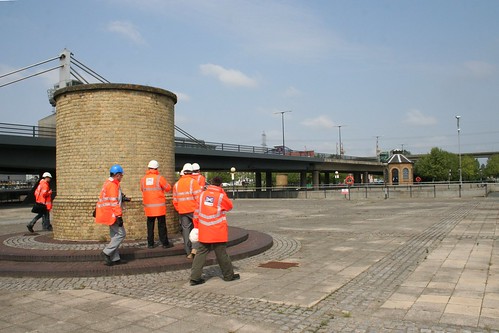

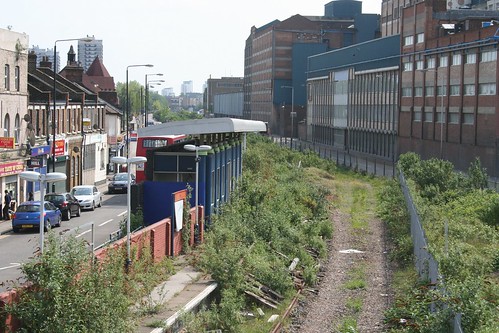
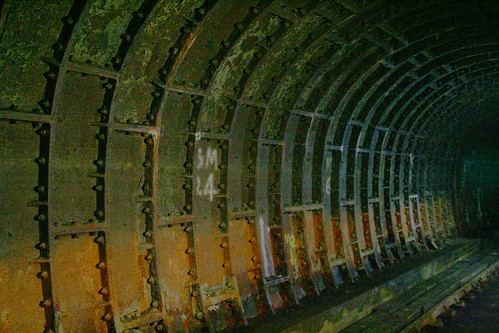








That last map is interesting. They seem to be proposing that the DLR becomes the NLL, top centre.
It’s quite an old map from before Crossrail details were finalised. That was probably an original idea, long since cancelled.
I used to go to parties held in the big pub that used to be opposite North Woolwich station and so caught that train down there a few times from Stratford.
Silvertown always struck me as a particularly desolate part of London. Nothing there except a few houses & the Tate & Lyle factory.
Desolate since the 1970s, but it used to be the heart of London’s docks and one of the busiest parts of the city.
Wow!
This short journey was amazing. Great stuff for railway fun like me. Thanks a lot 🙂
Unfortunatley the ”Train Driver video of 1995” seems to be no longer availiable.
Pity/shame.
I am interested in the walk
Can you email me.
Shirley joy